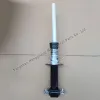What is the working principle of electromagnetic shock absorber?
The working principle of an electromagnetic shock absorber revolves around utilizing electromagnetic forces to adjust damping characteristics, providing a dynamic and adaptable response to changing road conditions.
Electromagnetic Damping
Solenoid and Magnet Assembly: The core component of an electromagnetic shock absorber is a solenoid coil and a magnet assembly. When an electric current flows through the solenoid coil, it generates a magnetic field.
Magnetic Field Variation: By controlling the intensity of the electric current, the strength of the magnetic field can be adjusted. As the strength of the magnetic field changes, it interacts with the magnetic field of the permanent magnet, resulting in a force exerted on the shock absorber piston.
Adjustable Damping Force: The force generated by the interaction of the magnetic fields alters the damping characteristics of the shock absorber. By modulating the electric current flowing through the solenoid coil, the damping force can be dynamically adjusted in real-time.
Control System Integration
Sensor Feedback: Electromagnetic shock absorbers often incorporate sensors to measure various parameters, such as vehicle speed, acceleration, or suspension displacement. This sensor feedback provides real-time information about road conditions and vehicle dynamics.

Electronic Control Unit (ECU): The sensor data is processed by an Electronic Control Unit (ECU), which determines the optimal damping settings based on the current driving conditions. The ECU then sends commands to adjust the electric current flowing through the solenoid coil accordingly.
Featured content:The Ultimate Buyer's Guide for Purchasing auto radiators
Unveiling the Differences Between Brake Shoes and Brake Pads
Which electric car is best for kids?
What is Modified Silane Automotive Silicone Sealant?
What Are the Benefits of Scooter Honeycomb Tires?
Advantages of DC Gasoline Generators
Maximizing Efficiency with Electromagnetic Shock Absorbers
Adaptive Response
Dynamic Adjustment: Unlike traditional passive shock absorbers with fixed damping characteristics, electromagnetic shock absorbers offer adaptive damping capabilities. They can respond instantaneously to changes in road surfaces, vehicle speed, and driving maneuvers, providing enhanced comfort, stability, and handling performance.
Customizable Settings: Some electromagnetic shock absorbers allow for customizable damping settings, allowing drivers to select different modes (such as Comfort, Normal, or Sport) to suit their preferences or driving conditions.
Benefits
Enhanced Comfort and Stability: The ability to adjust damping characteristics in real-time allows electromagnetic shock absorbers to provide a smoother and more controlled ride, reducing vibrations and body roll.
Improved Handling and Performance: By optimizing damping settings based on driving conditions, electromagnetic shock absorbers can enhance vehicle stability, traction, and cornering capabilities.
Versatility and Adaptability: Electromagnetic shock absorbers are well-suited for a wide range of vehicles and driving scenarios, from everyday commuting to high-performance driving, thanks to their adaptive and customizable damping capabilities.
In summary, the working principle of auto electromagnetic shock absorbers involves leveraging electromagnetic forces to dynamically adjust damping characteristics, providing a versatile and responsive suspension system that enhances comfort, stability, and performance.
Transform Your Ride: 67 Chevelle Lowering Springs Guide
How to Select the Right Ora Lightning Cat Exporter?
The Advantages of Implementing Ora Lightning Cat Exporter
How does the Changan DEEPAL S7 perform?
How to Choose Your Perfect Changan DEEPAL S7?
4 Tips to Select a Stylish Blue Tesla Model 3
How to Choose 14x











